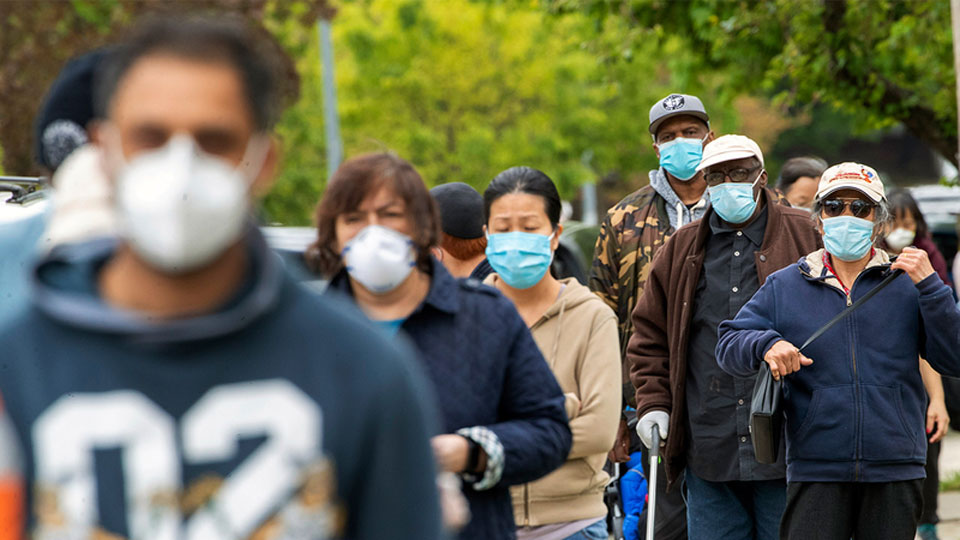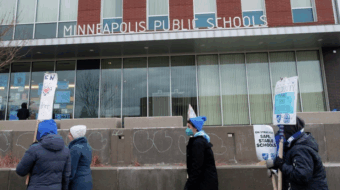
A late-March and early-April plan by the USPS to mail five free reusable masks to every household in America, blocked by Trump who wanted to downplay the virus, has resulted in tens of thousands of deaths that could have been avoided. The scuttled safety measure was exposed by the dump of thousands of documents from the American Oversight watchdog group and first reported by the Washington Post.
The initiative was to be a partnership between the White House Coronavirus Task Force and a consortium of textile manufacturers. Some 650 million masks would have been delivered to families at no charge, a move that could have had a major impact on coronavirus transmission and death in the United States.
Earlier orders to the U.S. population to don preventive face masks to help stop the spread of the coronavirus, stamped with the approval of the government, could have cut deaths from the disease by more than two-thirds, studies show. One, covering 24 nations, including the U.S., says 100% mask-wearing would cut deaths by 88%.
That study, by four scientists at the University of California-Davis, published in medical journal MedRxiv on Sept. 11, compared 100% mask-wearing in public to pre-COVID-19 no mask-wearing. The study did not break out separate figures for the U.S, however.
But the GOP Trump regime refused to listen, news stories reported, and the federal Centers for Disease Control did not mandate wearing masks and keeping social distancing until early April. Even then, the CDC did not order the protective measures.

Earlier studies, reported by the South China Morning Post, come from various universities. They also show that areas that instituted strict anti-virus measures, including the People’s Republic of China, dramatically decreased both the COVID-19 infection and death rates.
They also confirm the obvious, as Dr. Anthony Fauci, the nation’s leading airborne infectious disease specialist and director of the National Institute of Allergies and Infectious Diseases said in April.
“Obviously, if we had right from the very beginning shut everything down, it may have been a little bit different,” he said in a television interview on April 12. “But there was a lot of pushback about shutting things down back then.’
The flip side of not ordering the anti-virus measures was opening the economy up too soon. One of the studies, by Princeton University, used mathematical models to forecast that a too-soon return to business as usual, “would almost instantly increase the daily death toll by 3,000.”
That’s significant, as the U.S. hit a total of 200,000 dead from COVID-19 on Monday morning Sept. 21. The pandemic was officially declared in the U.S. on March 13, but news reports say it first appeared in the U.S. in early January, in Washington state.
“These findings may inform policymaking,” said the researchers from Princeton Medical Centre and other research institutes in a paper posted on the MedRxiv website earlier this year. That study, like the UC-Davis study, has yet to be peer-reviewed.
“The results indicate that reported mask-wearing could play an important role in mitigating the growth of COVID-19. Widespread mask-wearing within a country associates with an expected 7% decline in the growth rate of daily active cases of COVID-19 in the country,” although the range of daily decreases could run from 4%-10%, the UC-Davis scientists added.
“This daily decline equates to an expected 88.5% drop in the growth of daily active cases over a 30-day period when compared to zero percent mask-wearing, all else held equal. The decline in daily growth rate due to the combined effect of reported mask-wearing, reduced social mobility, and non-pharmaceutical interventions averages 28.1%” with a range of 24.2%-32%.
The Princeton team, headed by Dr. Lanjing Zhang, director of gastrointestinal and liver pathology, made the same points, according to the Morning Post.
Had U.S. politicians listened to Fauci and other experts and instituted mask-wearing, social distancing and self-isolation “and other aggressive self-mitigation efforts” at the same time China did, “the U.S. would now be facing just 30 new infections and fewer than 10 deaths per day from Covid-19,” the Princeton team said.
That was confirmed, that team added, when new daily COVID-19 cases in the U.S. plateaued and then started a slow decline in just over two weeks after the CDC recommended universal mask-wearing and social distancing, in early April.










